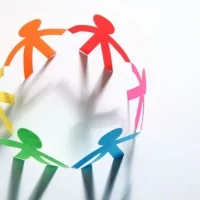In the ever-evolving landscape of nonprofit organizations, mastering the art of fundraising is crucial for sustainability and growth. With competition for donor attention at an all-time high, NGOs must adopt innovative strategies to stand out and effectively engage potential supporters. Fundraising hacks are not just clever tricks; they are actionable insights and techniques that can significantly enhance an organization’s ability to raise funds.
By leveraging technology, creativity, and relationship-building, NGOs can create a robust fundraising strategy that resonates with their audience and drives results. The importance of fundraising cannot be overstated. It is the lifeblood of any nonprofit, enabling organizations to fulfill their missions and make a tangible impact in their communities.
However, traditional methods of fundraising may no longer suffice in a world where donors are increasingly discerning and selective about where they allocate their resources. This article will explore various fundraising hacks that NGOs can implement to maximize their efforts, from harnessing the power of social media to hosting unique events and building lasting relationships with donors. By adopting these strategies, organizations can not only increase their funding but also foster a sense of community and engagement among their supporters.
Leveraging Social Media for Fundraising
Social media has transformed the way organizations connect with their audiences, making it an invaluable tool for fundraising. Platforms like Facebook, Instagram, Twitter, and LinkedIn offer NGOs the opportunity to reach a broader audience, share their stories, and engage potential donors in real-time. To effectively leverage social media for fundraising, organizations should focus on creating compelling content that resonates with their target audience.
This includes sharing impactful stories about the people they serve, showcasing the results of their work, and highlighting upcoming initiatives or campaigns. One effective strategy is to utilize storytelling through visual content. Videos and images can evoke emotions and create a deeper connection with potential donors.
For instance, sharing a short video that highlights a beneficiary’s journey can inspire viewers to contribute. Additionally, NGOs can use social media to run targeted ad campaigns that promote specific fundraising initiatives or events. By utilizing demographic targeting features available on platforms like Facebook, organizations can ensure that their message reaches individuals who are most likely to resonate with their cause.
Engaging with followers through comments and direct messages also fosters a sense of community and encourages ongoing support.
Hosting Creative Fundraising Events
Fundraising events are a time-honored tradition in the nonprofit sector, but to capture attention in a crowded marketplace, creativity is key. Organizations should think outside the box when planning events that not only raise funds but also engage participants in meaningful ways. Unique events can range from themed galas and charity auctions to community challenges and virtual experiences.
The goal is to create an experience that aligns with the organization’s mission while providing an enjoyable atmosphere for attendees. For example, consider hosting a “dine-out” event where local restaurants partner with the NGO to donate a percentage of their sales on a specific day. This not only raises funds but also promotes local businesses and fosters community spirit.
Alternatively, virtual events such as online workshops or webinars can attract a wider audience beyond geographical limitations. These events can include guest speakers, interactive sessions, or even live performances, making them engaging and memorable for participants. By incorporating elements of fun and creativity into fundraising events, NGOs can enhance donor engagement and encourage repeat participation.
Building Strong Relationships with Donors
At the heart of successful fundraising lies the ability to build strong relationships with donors. It is essential for NGOs to recognize that fundraising is not merely about transactions; it is about cultivating connections that foster trust and loyalty. Organizations should prioritize personalized communication with their donors, acknowledging their contributions and expressing gratitude regularly.
This can be achieved through handwritten thank-you notes, personalized emails, or even phone calls for major donors. Moreover, keeping donors informed about the impact of their contributions is vital in maintaining engagement. Regular updates on projects funded by donations help donors feel connected to the cause and understand how their support is making a difference.
Organizations can also invite donors to exclusive events or behind-the-scenes tours to deepen their connection with the mission. By treating donors as valued partners rather than just sources of funding, NGOs can create a loyal base of supporters who are more likely to contribute again in the future.
Implementing Matching Gift Programs
Matching gift programs present an excellent opportunity for NGOs to amplify their fundraising efforts without requiring additional resources. Many companies offer matching gift programs as part of their corporate social responsibility initiatives, allowing employees to double or even triple their donations to eligible nonprofits. NGOs should actively promote these programs to their supporters by providing clear information on how they work and how donors can take advantage of them.
To effectively implement matching gift programs, organizations should create easy-to-understand materials that outline the process for donors. This could include step-by-step guides on how to submit matching gift requests or information on which companies participate in such programs. Additionally, NGOs can use social media and email campaigns to remind supporters about matching gifts during key fundraising periods or campaigns.
By raising awareness about matching gift opportunities, organizations can significantly increase their overall fundraising totals while also fostering a culture of giving among their supporters.
Utilizing Email Marketing for Fundraising
Email marketing remains one of the most effective tools for nonprofit fundraising when executed strategically. With a well-curated email list, NGOs can communicate directly with supporters, share updates on initiatives, and solicit donations in a personalized manner. The key to successful email marketing lies in crafting compelling subject lines and content that captures attention while conveying urgency and importance.
Organizations should segment their email lists based on donor history, interests, or engagement levels to tailor messages effectively. For instance, first-time donors may appreciate a welcome email that outlines the organization’s mission and impact, while long-time supporters might respond better to updates on specific projects they have funded in the past. Additionally, incorporating storytelling elements into emails—such as testimonials from beneficiaries or success stories—can evoke emotions and inspire action.
Including clear calls-to-action (CTAs) that guide recipients on how to donate or get involved further enhances the effectiveness of email campaigns. In conclusion, mastering fundraising requires a multifaceted approach that combines creativity, relationship-building, and strategic communication. By leveraging social media effectively, hosting innovative events, nurturing donor relationships, implementing matching gift programs, and utilizing email marketing, NGOs can enhance their fundraising efforts significantly.
These hacks not only help organizations raise funds but also foster a sense of community among supporters who are passionate about making a difference. As nonprofits continue to navigate the challenges of funding in today’s world, embracing these strategies will be essential for achieving long-term success and sustainability in their missions.








































